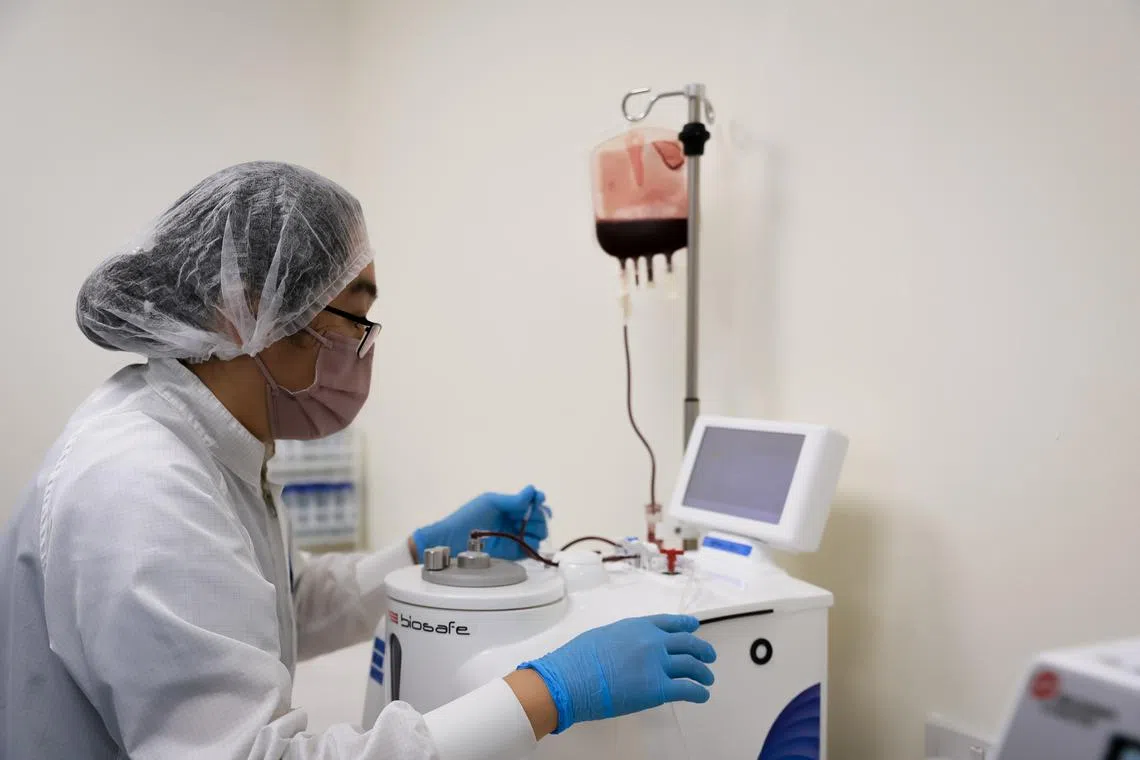MOH to review cord blood bank regulations after Cordlife incident
Sign up now: Get ST's newsletters delivered to your inbox

All cord blood banks in Singapore are subject to inspections once every two years.
PHOTO: ST FILE
Follow topic:
SINGAPORE – The Ministry of Health (MOH) will review the frequency it inspects cord blood banks in Singapore following the discovery of damaged cord blood units by Cordlife.
Revealing this in Parliament on Jan 10, Senior Minister of State for Health Janil Puthucheary said that MOH will review regulatory requirements under the Healthcare Services Act (HCSA) and the Healthcare Services (Cord Blood Banking Service) Regulations, which include aspects of inspections as well as monitoring and reporting.
He said the Government will be mindful not to add “inappropriate” costs and regulatory compliance burdens to businesses, and would take a “risk-based approach” as far as possible. He was responding to Ms Hany Soh’s (Marsiling-Yew Tee GRC) question on the need to increase the frequency of MOH’s biennial routine inspection.
The Straits Times reported on Jan 9 that all cord blood banks in Singapore are subject to inspections once every two years
Dr Janil said that many Cordlife clients have approached MOH for assistance and most of them want Cordlife to rectify its shortcomings. He assured the House that “supervision priority” is being given while investigations are ongoing.
He said MOH also received inquiries about the transfer of cord blood to other providers. The other cord blood banks in Singapore are StemCord, Cryoviva Singapore and Singapore Cord Blood Bank.
“MOH has advised that clients wait for the investigation to complete – likely in a few weeks’ time – before deciding whether to do so... transferring cord blood at ultra-low temperatures is a complex task and carries risks that are not insignificant,” said Dr Janil.
Following feedback from a member of the public, unannounced audits at Cordlife in August and November 2023 uncovered temperature lapses in seven of the 22 storage tanks. This exposed cord blood units to suboptimal temperatures at different periods from November 2020. Cord blood units have to be stored at temperatures below minus 150 deg C.
Cord blood banks usually transfer units to medical facilities when the blood is released for treatment purposes. This is done in a cryogenic container called a dry shipper.
According to international accreditation standards, cord blood units need to be transported in nitrogen-cooled dry shippers that can maintain temperatures of minus 150 deg C or colder. Such temperatures need to be maintained for at least 48 hours beyond the expected time of arrival at a receiving facility.
The dry shipper should also contain an electronic data logger that continuously monitors temperatures throughout the transportation period.


